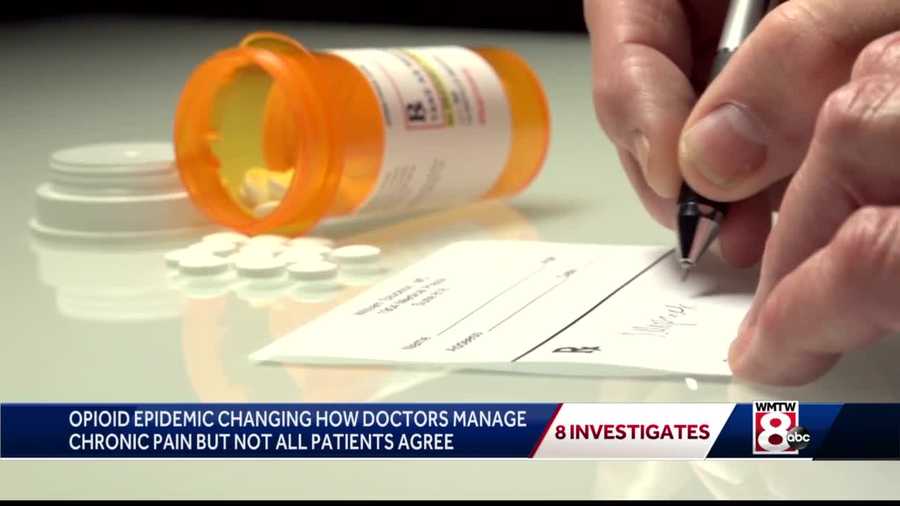Fighting through pain: 8 Investigates new guidelines on opioid prescriptions
Jeremy Grady started dealing with chronic pain more than 20 years ago after suffering a devastating shoulder injury.
At that time, doctors were heavily relying on opioids for treatment. It was the beginning of what we now know as the opioid epidemic, with prescribed medication funneling into the illegal drug pipeline, leading to skyrocketing addiction rates.
Both the medical and political communities have since responded, rolling out regulations to stem opioid misuse and revising treatment options for conditions like chronic pain.
"This happens to be a condition where you really can't manage it, at least right now, safely with any type of pill," said Dr. Donald Medd of Maine Medical Partners.
About 1 in 5 Americans suffer from chronic pain, making it one of the most common reasons for people to seek medical care.
For Grady, the pain is constant.
"I don't think I get any time at all where something doesn't hurt," he said.
The new restrictions on opioid prescriptions have left a large population of patients in flux. For Gray, opioids are one of the only ways to manage the pain.
"If I rolled over on (my shoulder), it was agony. There were times when I'd move and it would just drop out of the socket," Grady said. "Sometimes getting that medication to get you over the hump is not even possible."
New laws limit prescriptions for strong pain medications. It's part of an overall push to get away from prescribing opioids, even if a particular patient is not addicted to or misusing them.
"I have gone so far as offering to come in for weekly pill counts and let them test my blood or whatever they need to do," Grady said.
Doctors are now shifting to alternative treatments, ranging from osteopathic medicine to medication-assisted treatment. At the University of New England, physician assistant students and medical students are being trained on that method.
"What the medications that our students learn to prescribe are -- the function of them is to relieve the profound cravings that opioid use disorder creates," said Jenifer Van Deusen, a teacher at UNE.
There's also the concept of stepping down medications using a few over-the-counter pills in place of opioids.
Van Deusen cites research that says two Tylenol and one ibuprofen is just as effective as an opioid.
But patients like Grady are skeptical.
"Personally, I don't believe in a lot of these alternative pain relief things," he said.
Medd agrees that alternative medicine is a hard sell.
"It's very difficult to convince someone who's been on an opiate to just go to Tylenol and ibuprofen."
Grady continues to navigate a painful day-to-day routine while recognizing that more changes could be coming to the way he is treated.
"As frustrating as it can be and how upset you might get, you kind of have to have some patience."
He just hopes that sharing his story helps fix what he calls a broken system to help those with chronic pain.



